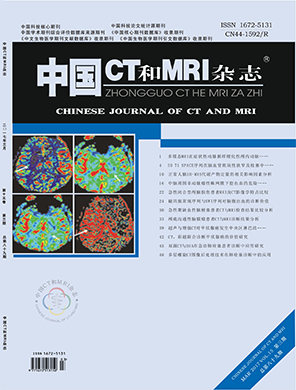Head and Neck Imaging
The Diagnostic Value of Magnetic Resonance Conventional Sequences Compare with the SWI Sequence on Brain Bleeding
Author:PENG Yi-zhi
affiliation:Department of Radiology, Macheng City People's Hospital, Macheng 438300, Hubei Province, China
PDFAbstract
Objective To study the diagnostic value of magnetic resonance conventional sequences compare with the SWI sequence on brain bleeding. Methods From July 2014 to June 2016, 80 cases of cerebral hemorrhage patients were selected in the study in our hospital. After admission, the patients were performed magnetic resonance conventional sequences (T1WI, T2WI and FLAIR) and the SWI sequences scanning. The test results were compared between the conventional sequence and the SWI sequence. Results the detection rate for conventional sequences (T1WI, T2WI and FLAIR) using in cerebral hemorrhage were 10.00% (8/80), 17.50% (14/80) and 56.25% (45/80), which were significantly lower than that of SWI sequence (100.00%, 80/80), with significant difference (P<0.05). The Conventional sequence (T1WI, T2WI and FLAIR) detection rate for lesion were 16.46% (68/413), 25.67% (106/413) and 64.16% (265/413), which were significantly lower than that of SWI sequence (100.00%, 413/413), with significant difference (P<0.05). Conclusion Cerebral hemorrhage detected by using magnetic resonance (NMR) SWI sequence, the detection rate in lesion were higher than the conventional sequence, which was conducive to the further treatment. We Suggest the SWI sequence should as the regular examination in MR sequences.
【Keyword】Conventional Sequence; Magnetic Sensitive Weighted Imaging; Magnetic Resonance; Cerebral Hemorrhage; Diagnosis
【Chart number】R445.2;R743
【Document Identification Number】A
【DOI】 10.3969/j.issn.1672- 5131.2017.03.009
Chinese journal of CT and MRI
th15Volume, th 3 Issue
2017Year03Month

Related articles